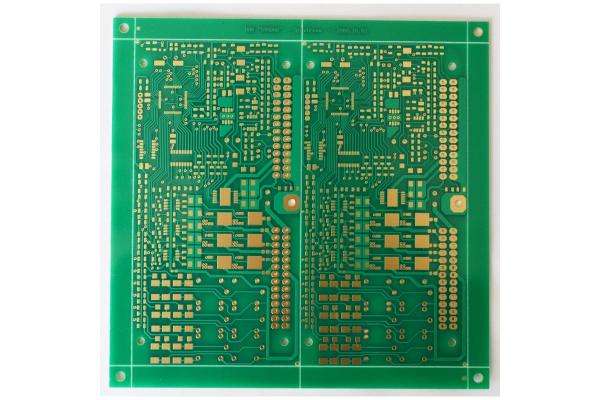When drilling aluminum substrates, you can choose two drilling methods. One is to use a CNC drill to drill, but it is particularly easy to burn the spindle. The advantage of drilling with a drill is that the drilled hole wall is particularly smooth, without burrs, and has high accuracy. The second type can be drilled with a gong machine, but it is easy to have burrs, and the precision is not so high, and it is easy to drill. Therefore, the cost of the aluminum substrate is a little higher than that of the FR4 board. .
In addition, there is no difference between single-sided aluminum substrate and FR4 single-sided board.
The double-sided aluminum substrate needs to be pressed first, and then the rest is the same as the FR4 double-sided board
The aluminum substrate is similar to the single-sided FR4 process, mainly because there is no electroplating process.

FR4 board is a code name for the grade of flame-retardant materials. It represents a material specification that the resin material must be able to extinguish by itself after burning. It is not a material name, but a material grade. Therefore, the current general PCB board There are many types of FR-4 grade materials used, but most of them are composite materials made of so-called Tera-Function epoxy resin, Filler and glass fiber.
FR-4 epoxy glass cloth laminate, according to the different uses, the industry is generally called: FR-4 Epoxy Glass Cloth, insulating board, epoxy board, epoxy resin board, brominated epoxy resin board, FR-4, Fiberglass board, fiberglass board, FR-4 reinforcement board, FPC reinforcement board, flexible circuit board reinforcement board, FR-4 epoxy resin board, flame-retardant insulation board, FR-4 laminated board, epoxy board, FR-4 light board, FR-4 fiberglass board, epoxy glass cloth board, epoxy glass cloth laminate, PCB board drilling pad. Main technical features and applications: stable electrical insulation performance, good flatness, smooth surface, no pits, thickness tolerance standards, suitable for high-performance electronic insulation requirements products, such as FPC reinforcement board, PCB drilling pad, glass Fiber meson, potentiometer carbon film printed glass fiber board, precision star gear (wafer grinding), precision test plate, electrical (electrical) equipment insulation support spacer, insulation backing plate, transformer insulation plate, motor insulation, grinding gear, Electronic switch insulation board, etc.
The aluminum substrate is a metal-based copper-clad laminate with good heat dissipation function. Generally, a single panel is composed of a three-layer structure, which is a circuit layer (copper foil), an insulating layer and a metal base layer. For high-end use, it is also designed as a double-sided board, and the structure is circuit layer, insulating layer, aluminum base, insulating layer, and circuit layer. Very few applications are multi-layer boards, which can be formed by bonding ordinary multi-layer boards with insulating layers and aluminum bases.
LED aluminum substrate is PCB, which is also the meaning of printed circuit board, but the material of the PCB board is aluminum alloy. In the past, the material of our general PCB board was glass fiber, but because the LED heats up, the PCB board used in LED lamps is generally The aluminum substrate can conduct heat quickly, and the PCB boards for other equipment or electrical appliances are still glass fiber boards.
The aluminum substrate is similar to the single-sided FR4 process. Mainly there is no electroplating process.